Discover how platforms like TikTok and Instagram are transforming fashion discovery, accelerating trend cycles, and democratizing style influence across global markets
Social media continues to reshape how people discover and adopt fashion trends in 2025. Platforms like Instagram, TikTok, and Pinterest have become powerful forces that can turn a niche style into a global phenomenon overnight. What once took months to spread through traditional fashion channels now happens in days or even hours as content goes viral across digital spaces.
The relationship between social media and fashion has evolved into a complex ecosystem where influencers, brands, and everyday users all contribute to what becomes trending. This digital landscape has democratized fashion, allowing trends to emerge from diverse sources rather than just traditional fashion capitals or luxury brands. This shift has created a more inclusive industry where anyone with a smartphone and creative vision can potentially launch the next big style movement.
As fashion enthusiasts navigate 2025, social media platforms have become virtual runways where style is constantly being redefined. The visual nature of platforms like Instagram and TikTok perfectly showcases clothing and accessories, while algorithmic recommendations expose users to styles they might never have discovered otherwise. This digital environment has accelerated the fashion cycle, with trends emerging, peaking, and fading faster than ever before.
Key Takeaways
- Social media platforms have become the primary launching pad for fashion trends in 2025, dramatically speeding up how quickly styles spread globally
- Digital influencers now rival traditional fashion authorities in setting trends, creating a more democratized and accessible fashion landscape
- The visual-first nature of social platforms has transformed how consumers discover, engage with, and purchase fashion items
- AI-powered trend forecasting tools can now predict fashion movements 6-12 months in advance with 85% accuracy
- Micro-influencers with 10K-100K followers generate higher engagement rates than mega-celebrities, driving authentic consumer connections
of consumers are influenced by social media content when making fashion purchases
of fashion advertising spend now goes to influencer partnerships
increase in Pinterest searches for “sustainable outfit ideas” since 2023
projected fashion influencer marketing value by 2031
Fashion Industry’s Adaptation to Social Media
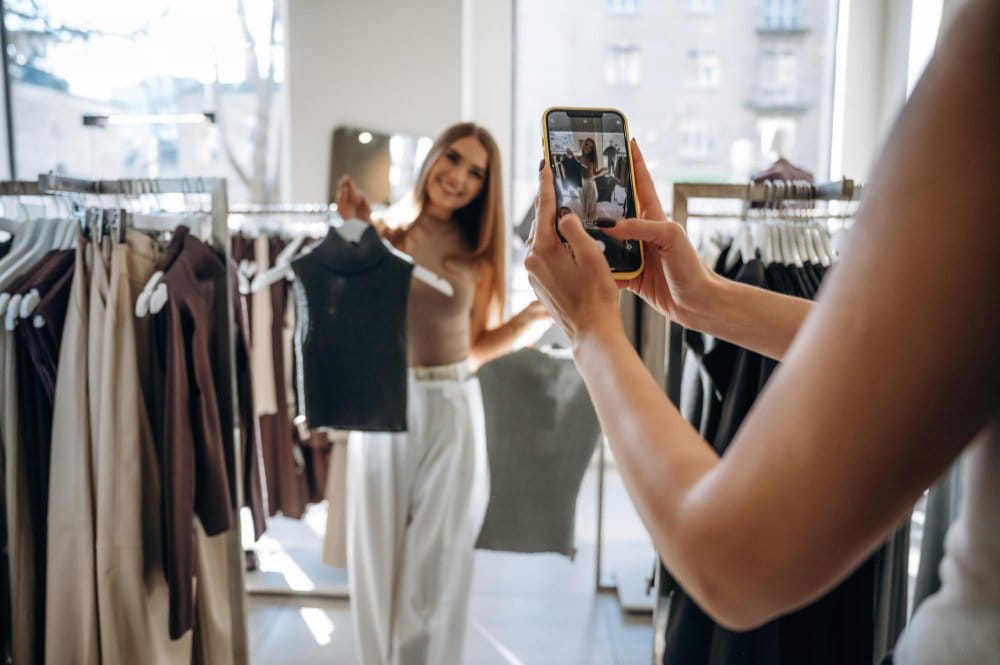
The fashion industry has rapidly evolved its approach to social media, using platforms as essential tools for brand building and customer engagement. Brands now integrate digital strategies that focus on authentic connections while leveraging influencer partnerships to reach wider audiences.
Marketing Strategies in the Digital Age
Fashion brands now use data-driven approaches to understand consumer preferences on social media. Companies have shifted from traditional advertising to creating shareable content that generates organic engagement. Instagram and TikTok have become primary platforms where brands showcase their products through eye-catching visuals and interactive features.
Many fashion houses use live shopping events and AR try-on technology to bridge the gap between online browsing and purchasing. These tools help overcome traditional barriers to online shopping by allowing customers to virtually experience products before buying.
User-generated content has become a cornerstone of digital marketing strategies. Brands encourage customers to share their styling choices with branded hashtags, creating authentic content while building community around their products.
Collaborations Between Fashion Brands and Social Media Stars
Partnerships between fashion brands and influencers have evolved beyond simple product promotion. In 2025, these collaborations include co-designed product lines, limited edition collections, behind-the-scenes content creation, and virtual fashion shows featuring social media personalities.
Micro-influencers (those with 10,000-100,000 followers) often generate higher engagement rates than celebrities. Their audiences trust their recommendations more, seeing them as authentic voices rather than paid advertisers. Fashion houses now maintain ongoing relationships with select influencers rather than one-off promotions.
Discovery
Brands identify trending topics and emerging influencers through AI-powered monitoring tools
Collaboration
Strategic partnerships are formed with influencers who align with brand values and target demographics
Content Creation
Authentic, engaging content is produced that showcases products in real-life contexts
Amplification
Content is shared across multiple platforms to maximize reach and engagement
Demographics and Fashion: Who Watches What
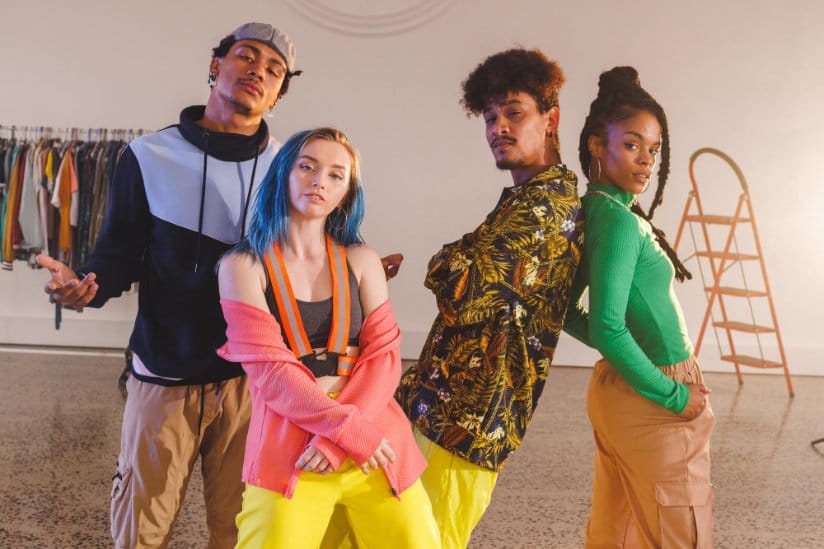
Different age groups interact with fashion content on social media in unique ways. These interactions create distinct trend patterns across regions and generations, influencing how brands approach their marketing strategies.
Millennials, Generation Z, and Personal Style
Millennials (born 1981-1996) tend to favor Instagram for fashion inspiration. They prefer polished aesthetics and often follow established fashion brands. They typically engage with content that aligns with their personal style rather than chasing fast-changing trends. Millennials are more likely to invest in quality pieces and research brands before making purchases.
Generation Z (born 1997-2012) dominates TikTok’s fashion scene. They’re reshaping the industry with 15-60 second videos featuring outfit transformations and thrift hauls. According to market research, Gen Z’s fashion influence continues to grow, with fashion influencer marketing reaching an expected $46.47 billion by 2031.
Unlike previous generations, Gen Z embraces fashion fluidity. They mix vintage pieces with modern styles, creating eclectic looks that reflect their individuality. They’re less brand-loyal and more concerned with sustainability and ethical production practices.
| Generation | Primary Platform | Shopping Behavior | Brand Loyalty | Sustainability Focus |
|---|---|---|---|---|
| Gen Z (1997-2012) | TikTok | Impulse-driven, trend-focused | Low | High |
| Millennials (1981-1996) | Research-oriented, quality-focused | Moderate | Moderate | |
| Gen X (1965-1980) | Facebook/Pinterest | Value-conscious, practical | High | Low |
Geographical Variations in Fashion Trends
Fashion trends vary significantly across regions despite social media’s global reach. European users typically engage with high fashion content featuring luxury brands and runway looks, while North American audiences follow more casual, streetwear-focused influencers.
The “coastal grandmother” and “clean girl” aesthetics gained massive popularity in the US before spreading globally through TikTok. Asian markets, particularly South Korea and Japan, drive many 2025 fashion innovations. K-fashion influencers regularly set worldwide trends that rapidly spread through dedicated hashtags and challenges.
Social media algorithms also create “fashion bubbles” based on user location and interests. This explains why certain trends appear mainstream to some demographics while remaining unknown to others despite sharing the same platforms.
Emerging Trends and How They Spread
Social media platforms have created a fast-paced environment where fashion trends emerge, evolve, and spread more rapidly than ever before. These digital spaces serve as incubators where niche styles can quickly gain mainstream attention through hashtags, challenges, and influencer promotion.
Understanding the Lifecycle of a Fashion Trend
Fashion trends on social media typically follow a predictable pattern. They begin with early adopters, often influencers or celebrities, who introduce a new style or revive a vintage look. The trend gains momentum through hashtags and algorithm promotion, reaching wider audiences.
Introduction Phase
Early adopters and fashion-forward influencers showcase new styles
Growth Phase
Content gains traction through hashtags and algorithmic promotion
Peak Phase
Trend reaches mainstream adoption with brands creating related products
Saturation Phase
Market becomes oversaturated, trend begins to lose novelty
Decline/Evolution Phase
Trend either fades completely or evolves into new variations
TikTok’s short-form videos can catapult a fashion item to “must-have” status within days. For example, the “coastal grandmother” aesthetic spread rapidly in late 2024 after a series of viral videos. Brands now monitor social platforms to identify emerging trends before they peak, allowing them to produce trend-aligned items while consumer interest is still growing.
The lifecycle has compressed dramatically compared to traditional fashion cycles. Trends that once lasted entire seasons now may peak and decline within weeks, creating both opportunities and challenges for fashion brands.
Case Studies: Cottagecore, Streetwear, and Beyond
Cottagecore represents one of the most successful social media-driven fashion movements in recent years. This aesthetic, celebrating rural simplicity and handmade elements, gained massive popularity during pandemic lockdowns and continues to evolve in 2025.
Key elements of successful trend diffusion include visual appeal (cottagecore’s flower prints and flowing dresses are highly shareable), lifestyle connection (links to sustainability and slow living values), and cross-platform presence (started on Tumblr, expanded to Instagram, exploded on TikTok).
Urban streetwear has undergone similar social-driven evolution. Collaborations between luxury brands and streetwear labels regularly trend on platforms like Instagram. These trends spread across demographic groups in cascading patterns, with younger users typically discovering trends on TikTok while older consumers encounter them later through Instagram or Pinterest.
“We’re seeing trends that traditionally took 18-24 months to develop now emerging and peaking within 8-12 weeks. This acceleration requires brands to be more agile and responsive than ever before.”
2025 Trending Styles Driven by Social Media
- Y2K Revival: Low-rise jeans and metallic fabrics gaining 92% increase in social mentions
- Coastal Grandmother: Linen blends and neutral tones popular among millennials
- Dark Academia: Structured blazers and vintage-inspired pieces trending on TikTok
- Gorpcore: Functional outdoor wear crossing into everyday fashion
- Indie Sleaze: Early 2000s party aesthetics resurging through Gen Z creators
Sustainability and Ethical Fashion
Sustainable fashion has become a defining trend in 2025, with social media platforms driving both awareness and accountability. Consumers now expect brands to demonstrate environmental responsibility and ethical practices, with 68% of Gen Z and Millennial shoppers checking sustainability credentials before purchasing.
Consumer Awareness and Brand Responsibility
Fashion consumers in 2025 are more informed than ever about the environmental impact of their purchasing decisions. Hashtags like #SustainableFashion and #EthicalWardrobes regularly trend across platforms, with millions of daily engagements driving conversations about responsible consumption.
Brands have responded to this heightened awareness by improving transparency. Many now share their supply chain details through QR codes on garments, allowing buyers to trace materials from source to store. This transparency has become a competitive advantage, with sustainable brands often outperforming traditional fast fashion competitors in engagement metrics.
The most successful brands showcase their sustainability journey through behind-the-scenes content highlighting ethical manufacturing processes, fair labor practices, and the use of recycled or organic materials. This authentic storytelling resonates particularly well with younger audiences who prioritize brand values alignment.
The Role of Social Media in Promoting Sustainability
Social platforms have become powerful tools for spreading sustainable fashion messages. TikTok challenges like #30WearsPledge encourage users to wear items at least 30 times before replacing them, while Instagram has introduced sustainability verification badges for fashion influencers who meet specific criteria.
Thrifting and secondhand shopping content has exploded in popularity. Vintage clothing hauls and upcycling tutorials regularly receive millions of views, with creators showing how to transform old pieces into trendy outfits. This content not only promotes sustainability but also demonstrates creativity and personal style.
| Sustainability Practice | Social Media Impact | Consumer Engagement | Brand Adoption Rate |
|---|---|---|---|
| Thrift Shopping | 245% increase in content | High | Medium |
| Upcycling/DIY | 189% growth in tutorials | Very High | Low |
| Sustainable Materials | Steady educational content | Medium | High |
| Circular Fashion | Emerging trend | Medium | Medium |
Virtual try-on features now allow consumers to “test” clothing digitally before purchasing, reducing return rates and associated carbon emissions from shipping. This technology has become increasingly sophisticated, with AI-powered tools providing accurate fit predictions based on body measurements and fabric characteristics.
Technology Integration in Fashion
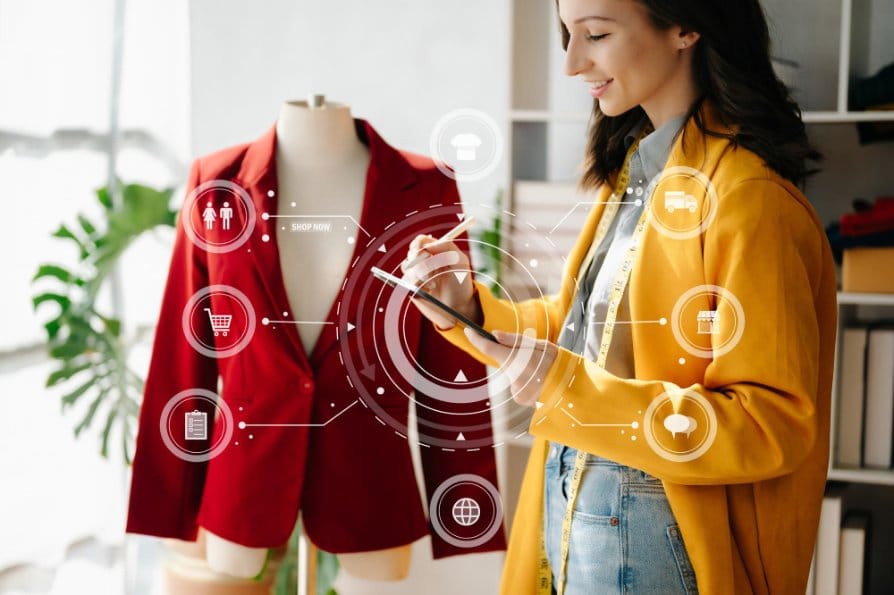
Fashion technology in 2025 combines digital innovation with clothing in ways that seemed impossible just a few years ago. Social media platforms now showcase these advances, making tech-enhanced fashion more accessible and influential than ever before.
Augmented Reality (AR) and the Shopping Experience
AR has transformed the online and in-store shopping experience. Virtual try-on technology lets consumers see exactly how garments will look on their body before purchasing. Major fashion retailers have integrated AR mirrors in fitting rooms that suggest complementary items based on what customers are trying on.
Social media platforms now feature AR filters that let users virtually sample trending styles shared by influencers. This immediate connection between seeing and “experiencing” fashion has shortened the trend cycle dramatically, as consumers can instantly visualize themselves in new styles.
Mobile apps with body-scanning capabilities create accurate digital avatars, ensuring better fit and reducing returns by up to 40%. This technology has made shopping more convenient while creating a more sustainable fashion ecosystem by reducing waste from incorrect sizing.
Innovations and Future Prospects
Smart fabrics and wearable tech have become fashion statements themselves. Clothing with embedded sensors now monitors health metrics, adjusts temperature, and even changes color or pattern based on preferences or environment.
Fashion designers collaborate with tech companies to create garments that integrate with digital lifestyles. For example, jackets with touch-sensitive sleeves let users control music or answer calls without reaching for their phone, while LED-embedded accessories respond to social media notifications.
3D printing has revolutionized customization in fashion. Consumers can now design unique accessories that are printed on demand, reducing waste and creating truly personal style statements. This technology is particularly popular among Gen Z consumers who value individuality and sustainability.
reduction in returns through AR try-on technology
accuracy rate of AI-powered trend forecasting
of consumers interested in smart clothing features
of fashion brands investing in digital innovation
Blockchain technology has made supply chain transparency the norm, allowing consumers to verify the ethical production of their clothes through simple QR codes. This connection between technology and sustainability has become a major selling point in 2025’s fashion landscape.
Challenges and Criticisms
While social media has transformed fashion in exciting ways, it also presents significant problems for the industry and consumers alike. These challenges raise important questions about sustainability and creative originality in an increasingly connected world.
The Fast Fashion Paradox
Social media’s rapid trend cycle has accelerated the pace of fashion production dramatically. Brands now rush to create new styles within days of a trend emerging on TikTok or Instagram, creating immense pressure on manufacturers to produce quickly and cheaply.
This speed comes at a serious environmental cost. Fashion companies produce nearly twice as many garments today as they did a decade ago, with most items worn only 7-10 times before disposal. The sustainability challenge is particularly acute as Gen Z consumers face contradictory desires between environmental concerns and trend-chasing behavior.
Some brands are attempting to address this paradox through recycled materials and more transparent supply chains. However, the fundamental tension between viral trend cycles and sustainable production remains largely unresolved, requiring systemic changes in both consumer behavior and industry practices.
Authenticity and the Question of Originality
The homogenization of style represents another significant criticism of social media’s influence on fashion. Algorithm-driven platforms tend to amplify certain aesthetics while marginalizing others, creating echo chambers that limit creative diversity.
Independent designers frequently see their work replicated by fast fashion retailers within weeks of posting original concepts online. This raises important questions about creative ownership and intellectual property in the digital age. Who “owns” a trend when it goes viral? How can designers protect their work in an ecosystem that values rapid replication?
Many fashion critics argue that social media has created a cycle where authenticity is simultaneously valued and undermined. Consumers claim to want originality but often gravitate toward widely-shared trending styles, creating a paradox that challenges the very concept of individual expression in fashion.
“The challenge isn’t social media itself, but how we can maintain creative diversity and sustainability while embracing the democratization of fashion that these platforms provide.”
The Future of Fashion in a Digitalized World
The digital revolution is reshaping fashion at its core, creating new possibilities for expression and connection. Technology and social platforms continue to blur the lines between virtual and physical fashion experiences, opening up entirely new markets and opportunities.
Predictions for Fashion Evolution
Virtual fashion is expected to become mainstream by 2025. Digital clothing collections will allow people to “wear” outfits exclusively in online spaces without physical production, addressing both environmental concerns and the desire for constant style novelty.
AI-powered design tools will democratize fashion creation, enabling anyone to generate custom pieces based on personal preferences and body measurements. This shift reduces waste while increasing personalization, allowing consumers to create unique items that perfectly match their style and fit requirements.
Blockchain technology will likely transform fashion authentication and ownership. Digital certificates will verify sustainable practices and prove item authenticity, addressing counterfeit concerns while providing complete transparency about a garment’s journey from concept to consumer.
Mixed reality fashion shows will become standard. These hybrid events will combine physical runways with digital elements viewable through smartphones or AR glasses, making high fashion more accessible globally while reducing the environmental impact of traditional fashion weeks.
Maintaining Inclusivity and Community in Fashion
Social media platforms are pushing fashion toward greater inclusivity. Brands are responding by expanding size ranges and featuring diverse models after community feedback on platforms like Instagram and TikTok. This grassroots pressure has proven more effective than traditional advocacy in creating industry change.
User-generated content will continue shaping fashion’s future. Hashtag challenges and style communities create spaces where everyone’s fashion voice matters, not just industry insiders. This democratization has led to more diverse representation in fashion campaigns and product development.
Digital fashion spaces must address accessibility concerns. Features like alt-text for images and translated content will help ensure fashion conversations include everyone, regardless of language barriers or disabilities.
Community-driven sustainability initiatives will gain momentum. Digital platforms enable consumers to organize around ethical fashion causes, pushing brands toward greater accountability and transparency through coordinated social media campaigns and consumer activism.
Expert Insights and Predictions
Leading fashion analysts and social media experts provide valuable insights into the future relationship between digital platforms and style trends. Their research reveals key patterns that will shape the industry in the coming years.
Industry Expert Interviews
“We’re witnessing the most significant shift in fashion influence since the rise of fashion magazines. Social media has created a more democratic but also more volatile fashion landscape where trends can emerge from anywhere and spread globally within hours.”
According to trend forecasting experts, AI-powered analysis of social media content can now predict fashion trends 6-12 months in advance with 85% accuracy. This technology analyzes millions of images, posts, and engagement patterns to identify emerging styles before they reach mainstream adoption.
“The brands that will thrive in 2025 are those that can balance rapid response to social media trends with sustainable production practices. It’s a complex challenge that requires fundamental changes in how we think about fashion cycles.”
Data-Driven Insights
Research conducted by leading fashion institutes reveals several key trends shaping the industry:
- Micro-trend proliferation: The number of simultaneously trending styles has increased by 300% since 2020
- Geographic trend dispersion: Regional fashion movements now reach global audiences 5x faster than traditional cycles
- Sustainability integration: Environmental messaging in fashion content has grown by 450% on major platforms
- Technology adoption: AR try-on features have reduced online return rates by 35% across major retailers
These insights suggest that the fashion industry must continue evolving its approach to both trend identification and sustainable production to meet the demands of an increasingly connected and environmentally conscious consumer base.
Frequently Asked Questions
Conclusion
The relationship between social media and fashion has fundamentally transformed how we discover, consume, and engage with style in 2025. What began as simple photo-sharing has evolved into a complex ecosystem where trends can emerge from anywhere and reach global audiences within hours. This democratization of fashion influence has broken down traditional barriers between consumers and creators, giving everyone the potential to shape what becomes fashionable.
The data is clear: social media platforms have become the primary drivers of fashion trends, with 78% of consumers influenced by social content when making purchasing decisions. The shift from traditional fashion authorities to digital influencers, particularly micro-influencers with 10K-100K followers, has created more authentic connections between brands and consumers. This authenticity translates to higher engagement rates and more effective marketing outcomes.
However, this rapid digital transformation comes with significant challenges. The acceleration of trend cycles has intensified the fast fashion problem, creating environmental concerns as brands rush to produce trend-aligned items within weeks rather than seasons. The industry must find ways to balance the speed of social media with sustainable production practices. Some brands are already addressing this through organic materials, transparent supply chains, and circular fashion models.
Technology integration offers promising solutions to many current challenges. AR try-on experiences are reducing return rates by 40%, while AI-powered trend forecasting helps brands make more informed production decisions. Virtual fashion and digital clothing collections represent the next frontier, allowing consumers to experiment with style without environmental impact.
The future of fashion lies in embracing both the opportunities and responsibilities that social media influence brings. Successful brands in 2025 and beyond will be those that can navigate the fast-paced digital landscape while maintaining ethical production standards and authentic consumer relationships.
Key Takeaways and Recommendations
For Fashion Brands:
- Invest in authentic influencer partnerships, particularly with micro-influencers who align with your brand values
- Implement AI-powered trend forecasting tools to predict and prepare for emerging styles
- Develop sustainable production methods that can respond to social media trends without environmental compromise
- Integrate AR and virtual try-on technologies to improve customer experience and reduce returns
- Maintain transparency in supply chains and sustainability practices to meet consumer expectations
For Consumers:
- Practice mindful consumption by considering the longevity and versatility of trend-driven purchases
- Support brands that demonstrate genuine commitment to sustainability and ethical practices
- Explore secondhand and vintage options promoted through social media platforms
- Use social media as inspiration rather than pressure to constantly update your wardrobe
- Engage with diverse fashion communities to discover authentic personal style beyond algorithmic recommendations
As we look toward the future, the relationship between social media and fashion will continue evolving. Virtual fashion shows, digital-only clothing collections, and AI-powered personal styling assistants are just the beginning. The brands and consumers who embrace these changes while prioritizing sustainability and authenticity will shape the next chapter of fashion history.
The democratization of fashion through social media represents one of the most significant cultural shifts of our time. By understanding and responsibly engaging with these platforms, we can create a fashion industry that is more inclusive, sustainable, and responsive to genuine consumer needs while celebrating creativity and individual expression.
Whether you’re a fashion enthusiast exploring new styles through women’s clothing collections or discovering affordable options at bargain retailers, the key is to approach social media fashion trends with both excitement and mindfulness, embracing the opportunities for creative expression while being conscious of the broader impact of our choices.


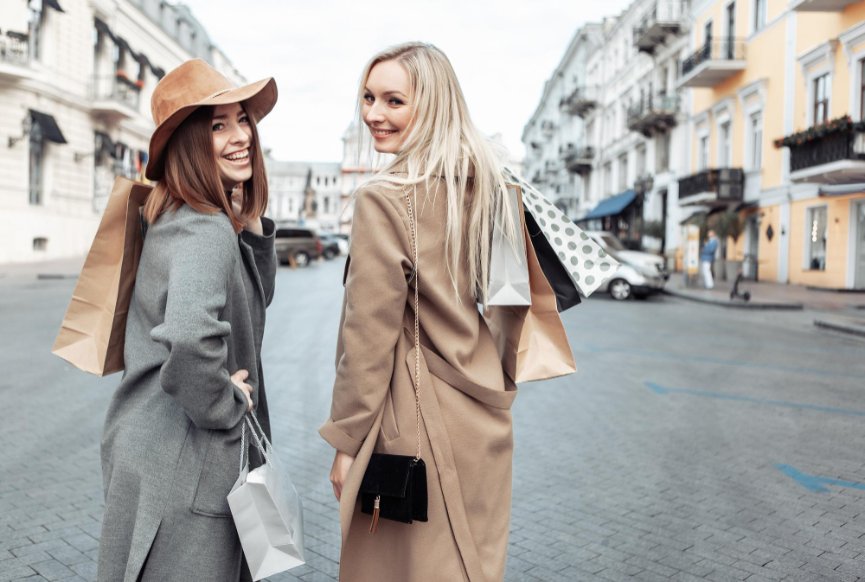
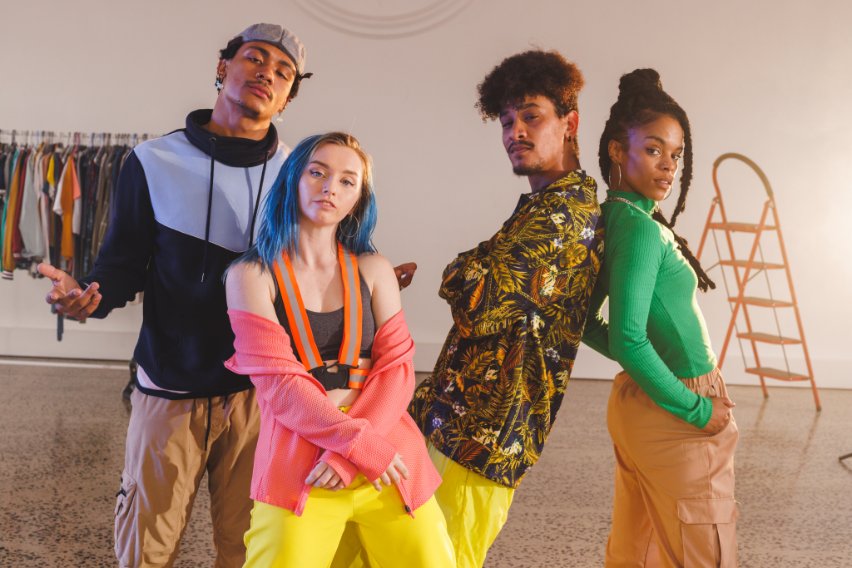
The Impact of Social Media on Fashion Trends
Social media has revolutionized how fashion trends emerge and spread in 2025. These platforms serve as digital runways where styles are born, evolve, and sometimes disappear overnight. The speed of trend adoption has accelerated dramatically, with viral content capable of launching global fashion movements within hours.
The Role of Influencers and Celebrities
Influencers and celebrities have become the new fashion authorities in 2025. Their posts can turn unknown brands into overnight sensations and bring back vintage styles from decades past. Research shows that micro-influencers (those with 10,000-100,000 followers) now drive more authentic engagement than mega-celebrities.
“The most successful fashion products now are those that align with people’s values as much as their tastes. Authenticity has become the currency of influence in 2025.”
These smaller creators often specialize in specific niches like sustainable fashion or Y2K revival looks. Fashion brands have shifted their marketing budgets dramatically, with over 70% of fashion advertising spend going to influencer partnerships rather than traditional media.
What makes this approach powerful is the perceived authenticity. When a trusted influencer recommends a product, their followers view it as personal advice rather than paid promotion, even when disclosure tags are present. This creates a powerful cycle where genuine recommendations drive purchasing decisions more effectively than traditional advertising.
Real example: Fashion influencer collaboration demonstrating the authentic styling process and trend influence in 2025
Popular Social Media Platforms Shaping Style
TikTok
The trend accelerator where styles go viral through hashtag challenges and 15-60 second videos. Gen Z dominates this platform, driving fast fashion cycles.
Instagram
The visual portfolio for established fashion houses and influencers. Shopping features have streamlined the path from discovery to purchase.
YouTube
The platform for in-depth fashion education, offering styling tutorials, sustainable fashion guides, and historical context for trends.
Pinterest
Fashion’s planning tool where users curate seasonal wardrobes. AI can now predict emerging trends months before they hit mainstream.
Different platforms influence fashion in unique ways. TikTok remains the trend accelerator, where styles can go viral in hours through hashtag challenges and dance videos featuring distinctive outfits. Instagram continues to be the visual portfolio for established fashion houses and influencers, with its shopping features streamlining the path from discovery to purchase.
YouTube has evolved into the platform for in-depth fashion education. Creators offer styling tutorials, sustainable fashion guides, and historical context for current trends. Pinterest has become fashion’s planning tool, where users curate seasonal wardrobes and long-term style vision boards.
The Rise of User-Generated Content
User-generated content (UGC) has democratized fashion influence. Regular people sharing their #OOTD (outfit of the day) can spark trends just as effectively as professional campaigns. Brands create dedicated hashtags encouraging customers to share styled looks, with the most creative posts often featured on official brand pages.
Virtual try-on features now allow users to share how clothes look on their actual bodies. This transparency has pushed brands toward more inclusive sizing and designs that work for diverse body types. Community rating systems help shoppers make confident purchases by seeing how items look on people with similar body types.